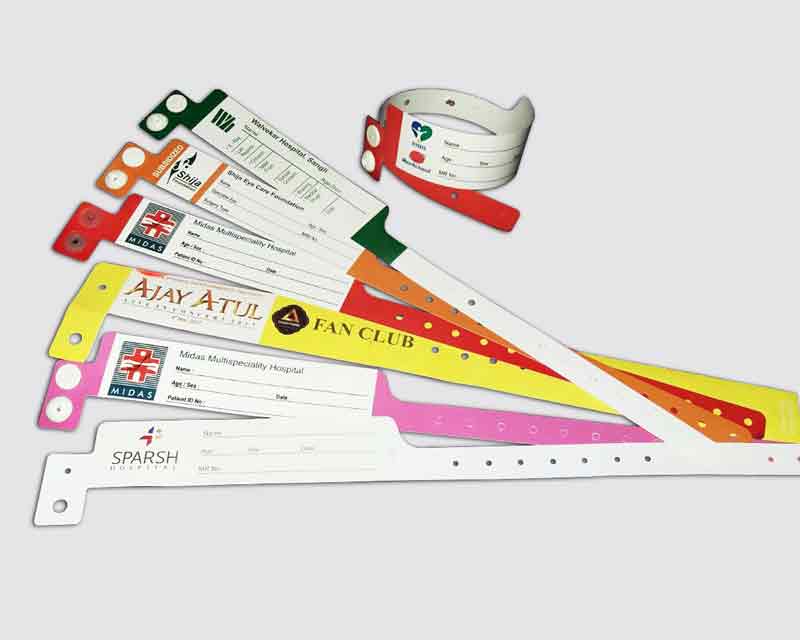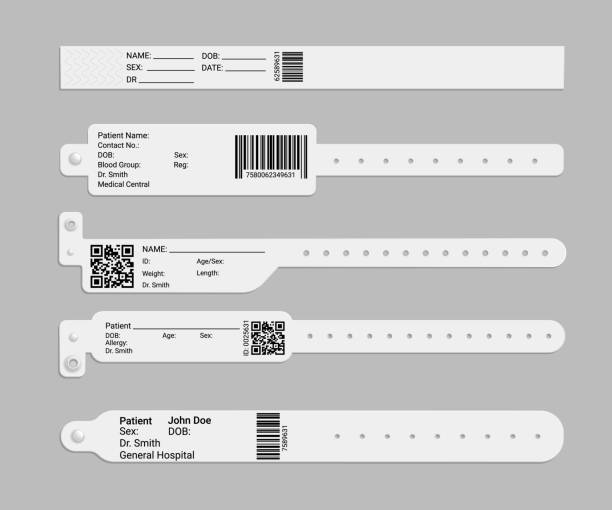A Comprehensive Guide to the Different Types of Patient Identification Band
A Comprehensive Guide to the Different Types of Patient Identification Band
Blog Article
Exploring the Various Kinds Of Patient Identification Band Used in Medical Facilities
In the intricate globe of medical care, the important role of Patient Identification bands commonly goes undetected. These bands, differing from basic paper wristbands to advanced RFID bands, form the foundation of Patient security procedures, guaranteeing accuracy in Patient Identification.
Recognizing the Relevance of Patient Identification Bands
While they might appear like simple devices, Patient Identification bands play a vital function in clinical centers. These bands function as a crucial device for confirming Patient identity, protecting against medical errors associated with misidentification. The bands typically display necessary details such as the Patient's name, age, blood type, and any recognized allergic reactions. They permit medical care professionals to rapidly access this essential details, thereby assisting in precise and timely clinical treatment. Patient Identification bands also help in simplifying management tasks, making sure precise record-keeping and billing. In spite of their simpleness, these bands symbolize the principle of Patient security, a foundation of top quality healthcare. Without them, the threat of clinical errors, and consequently, Patient harm, could significantly enhance.
Typical Paper Wristbands: Their Usage and Limitations
Traditional paper wristbands have actually been a staple in Patient Identification throughout various medical centers. While their use is extensive, they nurture specific limitations that might impact their efficiency in Patient monitoring. This section will certainly concentrate on the scope of their application and the inherent downsides related to their usage.
Paper Wristbands: Usage Scope
In the realm of Patient Identification, paper wristbands have long held a crucial role. These bands are usually made use of in outpatient setups, where the Patient's stay is temporary. In spite of improvements in innovation, the simple paper wristband stays a reliable and cost-efficient service for Patient Identification in different medical care scenarios.
Limitations of Paper Wristbands
Despite their widespread usage, paper wristbands are not without their disadvantages. Their physical durability is among the considerable constraints. Direct exposure to water, sweat, or misuse can provide them unreadable or even trigger them to degenerate. In addition, paper wristbands usually do not have the technical capabilities of even more modern alternatives, such as barcoding or RFID chips, limiting their performance to just showing created info. The inability to update or customize the information on the wristband is another shortcoming. Additionally, if the information is transcribed, readability can be endangered, bring about prospective misidentification. Paper wristbands can create discomfort or skin irritation to some individuals, particularly when put on for prolonged periods.
Barcoded Wristbands: Improvements in Patient Identification
While Patient Identification has actually long been an essential facet of health care, the advent of barcoded wristbands represents a substantial jump ahead. These bands leverage the simplicity of barcoding technology, permitting for Patient info to be swiftly checked and accessed. They boost the rate and precision of Patient Identification, lowering the risk of clinical errors associated with misidentification. Barcoded wristbands are cost-effective, easy to generate, and eliminate handwriting mistakes usual with hand-operated systems. Nevertheless, they are not without constraints. While they provide improvements over conventional bands, the barcode can end up being smudged or worn, making it unreadable. Despite this, barcoded wristbands remain a crucial device in modern healthcare setups, representing the intersection of innovation and Patient treatment.
Radio Regularity Identification (RFID) Bands: a Step In The Direction Of Futuristic Medical Care
The advancement of Patient Identification bands has produced the appearance of Superhigh frequency Identification (RFID) Bands (patient identification band). These cutting-edge tools existing crucial advantages for healthcare centers, supplying an extra reliable and highly progressed ways of Patient Identification. The implementation of RFID in healthcare is a significant step towards a more futuristic strategy to Patient management and safety and security
Recognizing RFID Bands

RFID Bands: Secret Benefits
Embracing a future where technology and healthcare combine, radio regularity Identification bands supply numerous vital advantages. Largely, these bands boost Patient security by offering accurate, instant Identification, consequently minimizing medical errors. RFID bands can keep a large amount of Patient information, including clinical background and allergies, making it possible for customized treatment. They likewise streamline management tasks, as the automated information entrance replaces hand-operated processes, improving effectiveness and reducing documentation. Furthermore, RFID bands offer real-time monitoring of clients, crucial in risky atmospheres such as surgery or extensive care. Lastly, these bands are sturdy and resistant to ecological variables, making sure consistent performance. On the whole, RFID bands represent a substantial development in Patient Identification innovation, benefiting both clients and doctor.
Implementing RFID in Healthcare
As we enter a technically advanced era, the execution of RFID bands in medical care comes to be progressively important. These bands provide a seamless way to track and identify clients, guaranteeing their safety and enhancing effectiveness in treatment procedures. RFID bands offer various benefits over typical Identification methods. They can keep a large amount of information, including the Patient's case history and treatment plans, which can be conveniently accessed by a knockout post doctor. This about his data assists doctors make informed decisions concerning the Patient's treatment plan. Furthermore, RFID bands reduce medical errors by offering accurate Patient Identification, which is vital in avoiding misdiagnosis or incorrect medication management. Thus, the application of RFID bands is a considerable step in the direction of boosting Patient safety and medical care distribution.

Color-Coded Wristbands: Aiding in Quick and Accurate Medical Diagnosis
In the bustling atmosphere of a clinical center, color-coded wristbands have arised as essential tools for swift and exact Identification of a client's clinical problem. These wristbands, worn by individuals, carry particular shades that match to different medical problems or standings. This system is made to supply immediate visual hints to health care companies, boosting Patient safety and care quality.
Methods for Reliable Execution and Management of Patient ID Bands
Achieving optimal usage of Patient Identification bands necessitates a well-structured method for their execution and monitoring. Patient education is additionally crucial; individuals need to understand the function of the bands and the need for their consistent wear. It's essential to have a back-up strategy in location, such as barcode scanning or biometrics, to make certain that Patient Identification is never ever compromised.
Conclusion
Patient Identification bands are essential in medical centers to make sure safety and security and precision. Effective execution and monitoring of these bands can considerably minimize clinical mistakes, boost efficiency, and enhance general Patient treatment.
These bands, differing sites from straightforward paper wristbands to innovative RFID bands, form the backbone of Patient safety protocols, making sure accuracy in Patient Identification.The development of Patient Identification bands has brought regarding the introduction of Radio Regularity Identification (RFID) Bands. Generally, RFID bands stand for a substantial innovation in Patient Identification innovation, benefiting both individuals and health care carriers.
RFID bands lower clinical mistakes by supplying precise Patient Identification, which is essential in avoiding misdiagnosis or wrong medicine management. Patient education and learning is likewise vital; individuals need to understand the function of the bands and the requirement for their constant wear.
Report this page